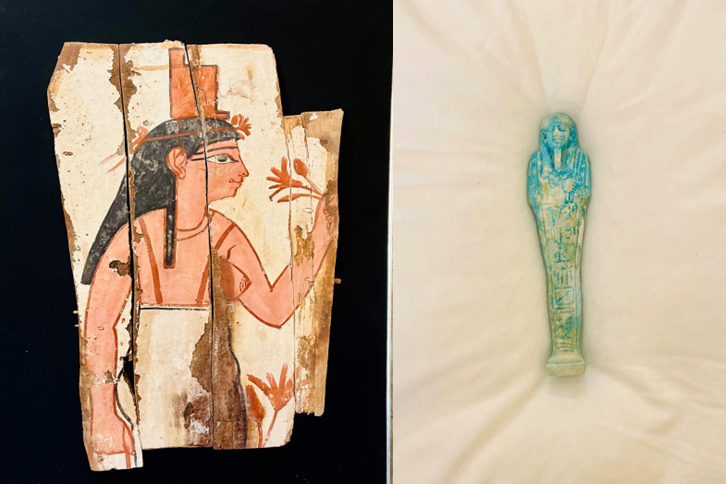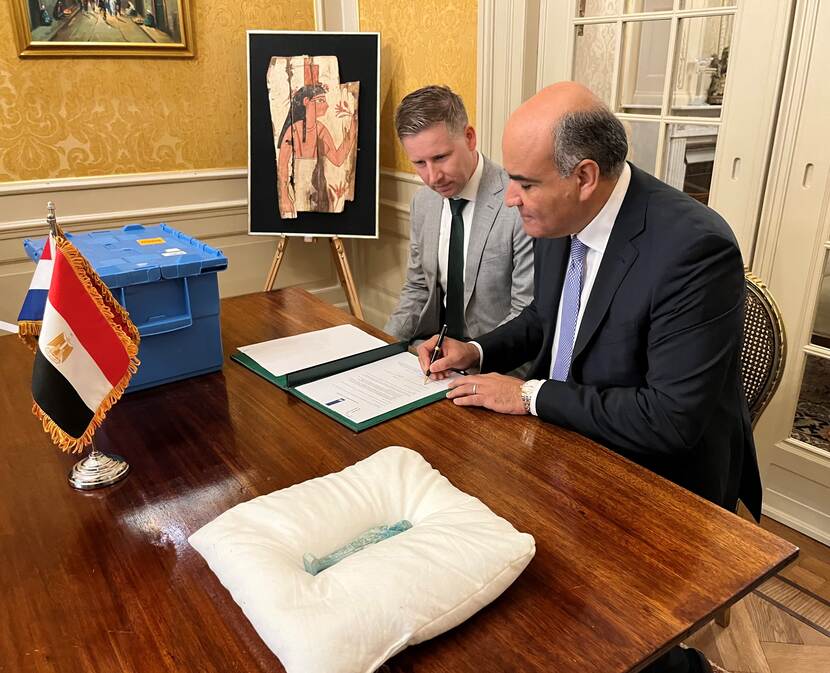Art World
The Netherlands Repatriates Three Stolen Egyptian Artifacts
The deal is part of broader European anti-trafficking efforts.

The deal is part of broader European anti-trafficking efforts.

Richard Whiddington

Dutch authorities have returned three unlawfully exported ancient Egyptian artifacts at a ceremony held at the National Police headquarters in the Hague on August 23.
The artifacts include a grave statue, known as a faience shabti, which is believed to date from ancient Egypt’s 26th dynasty (664 B.C.E to 525 B.C.E), a painting of the goddess Isis that once belonged to a sarcophagus, dated to Egypt’s Roman era (30 B.C.E. to 643 C.E.), and a mummified head dating to roughly 170 B.C.E. to 45 B.C.E.
The ceremony saw the chief inspector from the Netherlands’s Information and Heritage Inspectorate, Laurens Schouten, sign over ownership of the artofacts to Hatem Elsayed Mohamed Kamaleldin, the Egyptian ambassador to the Netherlands.
“The return of these objects serves to strengthen our joint efforts to protect national heritage and to respect international conventions, thus ensuring that heritage is available to future generations,” the Information and Heritage Inspectorate said in a statement.
Both the faience shabti and the painting are thought to have been illegally exported out of Egypt after grave robberies that took place in 2014. An investigation by Dutch police discovered the artifacts in the ownership of a Dutch art dealer, who willingly transferred the items. The mummified head had been in a private collection in the Netherlands for many years and was also willingly relinquished.

Hatem Elsayed Mohamed Kamaleldin, the Egyptian ambassador to the Netherlands, receiving the artifacts from Laurens Schouten, chief inspector cultural heritage at the Information and Heritage Inspectorate. Photo: Information and Heritage Inspectorate.
The faience shabti represents someone who has died in statuary form, the likes of which were created to carry out a person’s work in the afterlife. It bears the inscription, “Illumination of Osiris, Ipethemetes, born of Hathoremakhet, justified.” The painting of Isis would have been affixed to a coffin, a practice common in Egypt’s Roman period.
The inspectorate noted the objects were returned in compliance with UNESCO’s 1970 convention against the illegal trafficking of cultural property, a convention both Egypt and the Netherlands are party to. “The country’s cultural riches put it at risk of illegal excavations, theft and plundering,” the statement said. “International cooperation is the only way to combat these threats.”
The restitution of the stolen Egyptian artifacts follows the return of a 3,400 year-old bust of the King Ramses II to Egypt in April. The stone bust was stolen in the late 1980s or early 1990s and was moved across Europe before being confiscated in a joint cooperation between Egypt and Switzerland, a move indicative of broader efforts in Europe to crackdown on antiquities trafficking.